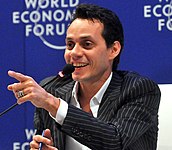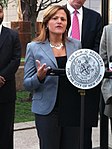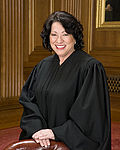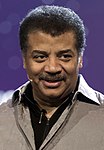
A | B | C | D | E | F | G | H | CH | I | J | K | L | M | N | O | P | Q | R | S | T | U | V | W | X | Y | Z | 0 | 1 | 2 | 3 | 4 | 5 | 6 | 7 | 8 | 9
Puertorriqueños en Estados Unidos | |
|---|---|
 | |
| Total population | |
1.78% of the US population (2022)[1] | |
| Regions with significant populations | |
| Majority concentrated in Florida and the Northeastern United States (New York, Pennsylvania, New Jersey, Connecticut, and Massachusetts) Smaller numbers in other parts of the country, including in Rhode Island, Delaware, Maryland, Virginia, North Carolina, and Georgia in the East, Ohio, Illinois and Wisconsin in the Midwest, Texas in the Southwest, and California and Hawaii out west, among other areas.[2] | |
| Languages | |
| Puerto Rican Spanish, American English and Spanglish | |
| Religion | |
| Christianity (Catholic Church and Protestant) | |
| Related ethnic groups | |
| Taíno, Europeans, Africans, White Latin Americans, Afro-Latin Americans, Mulattos, Mestizos, Latino Americans, White Puerto Ricans, Black Puerto Ricans, Dominican Americans, Cuban Americans. |
| Part of a series on |
| Hispanic and Latino Americans |
|---|
| Part of a series on |
| Puerto Ricans |
|---|
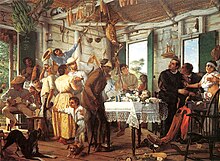 |
| By region or country |
| Subgroups |
| Culture |
| Religion |
| History |
| Language |
|
|
Stateside Puerto Ricans[3][4] (Spanish: Puertorriqueños en Estados Unidos), also ambiguously known as Puerto Rican Americans (Spanish: puertorriqueño-americanos,[5][6] puertorriqueño-estadounidenses),[7][8] or Puerto Ricans in the United States, are Puerto Ricans who are in the United States proper of the 50 states and the District of Columbia who were born in or trace any family ancestry to the unincorporated US territory of Puerto Rico.[9][10]
As Puerto Rico is a U.S. territory, all Puerto Ricans living on both the island and stateside have US citizenship. At 9.3% of the Hispanic population in the United States, Puerto Ricans are the largest Hispanic group nationwide, after Mexicans and are 1.78% of the entire population of the United States.[1] Stateside Puerto Ricans are also the largest Caribbean-origin group in the country, representing over one-third of people with origins in the geographic Caribbean region.[11] While the 2020 Census counted the number of Puerto Ricans living in the States at 5.6 million, estimates in 2022 show the Puerto Rican population to be 5.91 million.[1][12][13]
Despite newer migration trends, the New York metropolitan area continues to be the largest demographic and cultural center for Puerto Ricans in the mainland United States, with the Orlando metropolitan area having the second-largest community. The portmanteau "Nuyorican" refers to Puerto Ricans and their descendants in the New York City area. A large portion of the Puerto Rican population in the United States proper resides in the Northeast and Florida.
Identity

Puerto Ricans have been migrating to the continental United States since the 19th century and migrating since 1898 (after the island territory was transferred from Spain to the United States) and have a long history of collective social advocacy for their political and social rights and preserving their cultural heritage. In New York City, which has the largest concentration of Puerto Ricans in the United States, they began running for elective office in the 1920s, electing one of their own to the New York State Assembly for the first time in 1937.[14]
Important Puerto Rican institutions have emerged from this long history.[15] ASPIRA was established in New York City in 1961 and is now one of the largest national Latino nonprofit organizations in the United States.[16] There is also the National Puerto Rican Coalition in Washington, D.C., the National Puerto Rican Forum, the Puerto Rican Family Institute, Boricua College, the Center for Puerto Rican Studies of the City University of New York at Hunter College, the Puerto Rican Legal Defense and Education Fund, the National Conference of Puerto Rican Women and the New York League of Puerto Rican Women, Inc., among others.
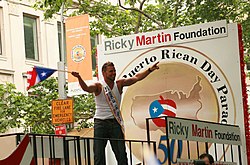
The government of Puerto Rico has a long history of involvement with the stateside Puerto Rican community.[17] In July 1930, Puerto Rico's Department of Labor established an employment service in New York City.[18] The Migration Division (known as the "Commonwealth Office"), also part of Puerto Rico's Department of Labor, was created in 1948, and by the end of the 1950s, was operating in 115 cities and towns stateside.[19]
The strength of stateside Puerto Rican identity is fueled by a number of factors. These include the large circular migration between the island and the mainland United States, a long tradition of the government of Puerto Rico promoting its ties to those stateside, the continuing existence of racial-ethnic prejudice and discrimination in the United States, and high residential and school segregation.[20][21][22] Notable attributes that set the stateside Puerto Rican population apart from the rest of the US Latino community, is facts such as, Puerto Ricans have the highest military enrollment rates compared to other Latinos, Puerto Ricans are more likely to be proficient in English than any other Latino group, and Puerto Ricans are also more likely to intermarry other ethnic groups, and far more likely to intermarry blacks than any other Latino group.[23][24][25][26][27][28][29][30][31]
Migration history

During the 19th century, commerce existed between the ports of the eastern coast of the United States and Puerto Rico. Ship records show that many Puerto Ricans traveled on ships that sailed from and to U.S. and Puerto Rico. Many of them settled in places such as New York, New Jersey, Connecticut, and Massachusetts. Upon the outbreak of the American Civil War, some Puerto Ricans joined the ranks of the military armed forces. However, since Puerto Ricans were still Spanish subjects, they were inscribed as Spaniards.[32]
Even during Spanish rule, Puerto Ricans settled in the US. During the nineteenth century it was mostly political exiles who came to the mainland.[33] Since 1898, Puerto Rico has been an "insular possession" and "unincorporated territory" of the United States, ruled for its first half-century by American generals and non-Puerto-Rican civil servants from the mainland, fueling migratory patterns between the mainland and the island. After the end of the Spanish–American War a significant influx of Puerto Rican workers to the US began. With its 1898 victory, the United States acquired Puerto Rico from Spain and has retained sovereignty since. The 1917 Jones–Shafroth Act made all Puerto Ricans US citizens, freeing them from immigration barriers. The massive migration of Puerto Ricans to the mainland United States was largest in the early and late 20th century,[34] prior to its resurgence in the early 21st century.
U.S. political and economic interventions in Puerto Rico created the conditions for emigration, "by concentrating wealth in the hands of US corporations and displacing workers."[35] Policymakers "promoted colonization plans and contract labor programs to reduce the population. U.S. employers, often with government support, recruited Puerto Ricans as a source of low-wage labor to the United States and other destinations."[36]
Puerto Ricans migrated in search of higher-wage jobs, first to New York City, and later to other cities such as Chicago, Philadelphia and Boston.[37] However, in more recent years, there has been a significant resurgence in migration from Puerto Rico to New York and New Jersey, with an apparently multifactorial allure to Puerto Ricans, primarily for economic and cultural considerations;[38][39] with the Puerto Rican population of the New York City Metropolitan Area increasing from 1,177,430 in 2010 to a Census-estimated 1,494,670 in 2016,[40] maintaining its status as the largest metropolitan concentration and cultural center for Puerto Rican Americans by a significant margin on Continental America.
New York City neighborhoods such as East Harlem in Upper Manhattan, the South Bronx and Bushwick, Williamsburg in Brooklyn are often the most associated with the stateside Puerto Rican population. However, several neighborhoods in eastern North Philadelphia, especially Fairhill, have some of the highest concentrations of Puerto Ricans in the United States, Fairhill having the highest when being compared to other big city neighborhoods.[41]
New York City
- Nuyoricans
Between the 1950s and the 1980s, large numbers of Puerto Ricans migrated to New York, especially to Brooklyn, The Bronx, and the Spanish Harlem and Loisaida neighborhoods of Manhattan. Labor recruitment was the basis of this particular community. In 1960, about 70% of stateside Puerto Ricans lived in New York City.[42] They helped others settle, find work, and build communities by relying on social networks containing friends and family.
For a long time, Spanish Harlem (East Harlem) and Loisaida (Lower East Side) were the two major Puerto Rican communities in the city, but during the 1960s and 1970s, predominately Puerto Rican neighborhoods started to spring up in the Bronx because of its proximity to East Harlem and in Brooklyn because of its proximity via the Williamsburg Bridge to the Lower East Side. There are significant Puerto Rican communities in all five boroughs of New York City.
Philippe Bourgois, an anthropologist who has studied Puerto Ricans in the inner city, suggests that "the Puerto Rican community has fallen victim to poverty through social marginalization due to the transformation of New York into a global city."[43] The Puerto Rican population in East Harlem and New York City as a whole remains the poorest among all migrant groups in US cities. As of 1973, about "46.2% of the Puerto Rican migrants in East Harlem were living below the federal poverty line."[44] However, more affluent Puerto Rican American professionals have migrated to suburban neighborhoods on Long Island and in Westchester County, New Jersey and Connecticut.
New York City also became the mecca for freestyle music in the 1980s, of which Puerto Rican singer-songwriters represented an integral component.[45] Puerto Rican influence in popular music continues in the 21st century, encompassing major artists such as Jennifer Lopez.[46]
Philadelphia
This section needs expansion with: examples with reliable citations. You can help by adding to it. (September 2017) |
As of the 2010 U.S. Census, there was an estimate of 121,643 Puerto Rican Americans living in Philadelphia, up from 91,527 in 2000. Representing 8% of Philadelphia's total population and 75% of the city's Latino American population, as of 2010. Puerto Ricans are the largest Latino group in the city and that, outside Puerto Rico, Philadelphia now has the second largest Puerto Rican population, estimated at about 150,000.[47] Since 2010, Philadelphia replaced the city of Chicago as the city with the second-largest Puerto Rican population, Chicago's slightly shrunk and Philadelphia's continued to grow, more than ever before, not only having the second largest Puerto Rican population, but also one of the fastest-growing.[48] Most sources, including the most reliable, the United States Census Bureau, estimated that as of 2010, Puerto Ricans made up between 70–80 percent of Philadelphia's Latino population.[49][50] Other sources put the percentage Puerto Ricans make up of Philadelphia's Latino population, as high as 90% and others as low as 64%.[51][52][53][54]
Chicago

Puerto Ricans first arrived in the early part of the 20th century from more affluent families to study at colleges or universities. In the 1930s there was an enclave around 35th and Michigan. In the 1950s two small barrios emerged known as la Clark and La Madison just North and West of Downtown, near hotel jobs and then where the factories once stood. These communities were displaced by the city as part of their slum clearance. In 1968, a community group, the Young Lords mounted protests and demonstrations and occupied several buildings of institutions demanding that they invest in low income housing.[55] Humboldt Park is home to one of the largest Puerto Rican communities in Chicago and is known as "Little Puerto Rico" or Paseo Boricua.[56][57]
Orlando
Orlando and the surrounding area has had a sizable Puerto Rican population since the 1980s, as Florida as a whole has always had a decent sized Puerto Rican population. A big contributing factor for the growth of the Puerto Rican community in Central Florida was Walt Disney World, who heavily recruited employees in Puerto Rico. Central Florida's Puerto Rican population began to skyrocket starting in the early 2000s and accelerating in the 2010s, with many New Yorkers of Puerto Rican ancestry (Nuyoricans) moving to Florida, joining the island-born Puerto Ricans.[58]
During this time, the 1990s and early 2000s, the overall migration patterns out from Puerto Rico to the US mainland began to switch and Orlando became the main destination from Puerto Rico by far, replacing New York City. Puerto Ricans are largely spread out in the Orlando area, but the heaviest concentration is in the southern portions, like Kissimmee, Poinciana and many other areas in Osceola County, where Puerto Ricans make up the majority of the population.[59][60]
Demographics of Stateside Puerto Ricans
In 1950, about a quarter of a million Puerto Rican natives lived "stateside", or in one of the U.S. states. In March 2012 that figure had risen to about 1.5 million. That is, slightly less than a third of the 5 million Puerto Ricans living stateside were born on the island.[12][13] Puerto Ricans are also the second-largest Latino group in the United States after those of Mexican descent.[61]
| Year | Pop. | ±% |
|---|---|---|
| 1910 | 1,513 | — |
| 1920 | 11,811 | +680.6% |
| 1930 | 52,774 | +346.8% |
| 1940 | 69,967 | +32.6% |
| 1950 | 226,110 | +223.2% |
| 1960 | 892,513 | +294.7% |
| 1970 | 1,391,463 | +55.9% |
| 1980 | 2,014,000 | +44.7% |
| 1990 | 2,728,000 | +35.5% |
| 2000 | 3,406,178 | +24.9% |
| 2010 | 4,623,716 | +35.7% |
| 2020 | 5,601,863 | +21.2% |
| 2022 | 5,905,178 | +5.4% |
| Source: The Puerto Rican Diaspora: Historical Perspectives[62] | ||
Population by state
Relative to the population of each state
The Puerto Rican population by state, showing the percentage of the state's population that identifies itself as Puerto Rican relative to the state/territory population as a whole is shown in the following table.
| State/Territory | 2020 census[63] | % (2020) | 2010 census[64][65] | % (2010)[note 1] | 2000 census[66] | % (2000) |
|---|---|---|---|---|---|---|
| 21,512 | 0.4% | 12,225 | 0.3% | 6,322 | 0.1% | |
| 5,877 | 0.8% | 4,502 | 0.6% | 2,649 | 0.4% | |
| 49,229 | 0.6% | 34,787 | 0.5% | 17,547 | 0.3% | |
| 9,158 | 0.3% | 4,789 | 0.2% | 2,473 | 0.0% | |
| 213,303 | 0.5% | 189,945 | 0.5% | 140,570 | 0.4% | |
| 37,899 | 0.6% | 22,995 | 0.5% | 12,993 | 0.3% | |
| 288,344 | 8.0% | 252,972 | 7.1% | 194,443 | 5.7% | |
| 28,922 | 2.9% | 22,533 | 2.5% | 14,005 | 1.8% | |
| 4,848 | 0.7% | 3,129 | 0.5% | 2,328 | 0.4% | |
| 1,153,880 | 5.3% | 847,550 | 4.5% | 482,027 | 3.0% | |
| 109,009 | 1.0% | 71,987 | 0.7% | 35,532 | 0.4% | |
| 46,229 | 3.1% | 44,116 | 3.2% | 30,005 | 2.4% | |
| 4,927 | 0.2% | 2,910 | 0.2% | 1,509 | 0.1% | |
| 196,156 | Zdroj:https://en.wikipedia.org?pojem=Stateside_Puerto_Ricans

